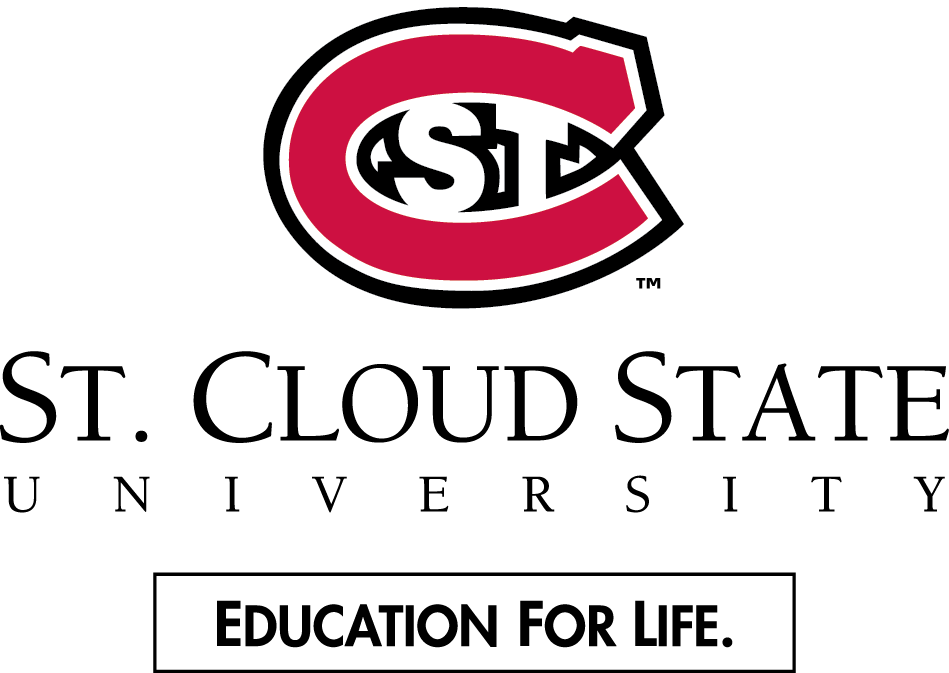BS in Biomedical Science
COURSE TITLE
COURSE LEVEL
COURSE CREDITS
STUDY METHOD
START DATE
COURSE DURATION
AWARDED & DELIVERED BY

- Opportunity to develop relevant skills in classwork, laboratory research and fieldwork with nationally-recognized faculty members.
- Program operates in a state with more than 480 medical device firms registered with the U.S. Food and Drug Administration.
- Completes preparation for professional study programs required for health-care degrees such as medical doctor, dentist and pharmacist.
- Notable alumnus: Bruce Johnson ’83, professor of medicine at Mayo Clinic, studies how the human body reacts to extreme conditions in locations such as Mount Everest.
Course Content
Program Requirements (57 Credits)
BIOL 151. Cell Function and Inheritance
| Department: | Biology |
| Description: | The cellular and genetic basis of life. Current laboratory methods. |
| Prerequisites: | MATH 072 (C- or better) OR placement test score allowing registration for MATH 112 or higher |
| Semester Offered: |
|
| Grading Method: | ABCDF |
| Lab: | Lab |
Student Learning Outcomes
| 1. | Design and perform laboratory experiments on biological specimens and communicate results in written and oral form. |
| 2. | Identify and define the tenants of Biological Evolution. |
| 3. | Identify and define the ultrastructure of prokaryotic and eukaryotic cells with illustrations and vocabulary including the structure of two key organelles, mitochondria and chloroplasts. |
| 4. | Identify the chemical building blocks of life, the chemical reactions of Biology and the Biochemical Language of Life and decode the universal Biochemical Language of Life using computers. |
| 5. | Discern the regulation of the universal language of life in molecular terms and observe it in a biotechnology laboratory. |
BIOL 152. Organismal Diversity
| Department: | Biology |
| Description: | Organisms at the cellular, organismal, and ecological levels. Integrate knowledge, terminology, and concepts from all fields of biology to gain an appreciation of the origin of life and how species diversity arose. |
| Prerequisites: | MATH 072 (C- or better) OR placement test score allowing registration for MATH 112 or higher |
| Semester Offered: |
|
| Grading Method: | ABCDF |
| Lab: | Lab |
| Goal Area: |
|
BIOL 262. Genetics
| Department: | Biology |
| Description: | Transmission, molecular, and population genetics with an emphasis on their application to human disease, agriculture, and evolution. |
| Prerequisites: | BIOL 151, BIOL 152, CHEM 210 |
| Semester Offered: |
|
| Grading Method: | ABCDF |
| Lab: | Lab |
Student Learning Outcomes
| 1. | Explain how genes are passed from parent to offspring. |
| 2. | Predict the probability of specific outcomes occurring, given a specific genetic cross. |
| 3. | Describe the structure and organization of genes and chromosomes. |
| 4. | Explain how DNA, RNA, and proteins produce traits in organisms. |
| 5. | Differentiate between several mechanism by which cells and organisms regulate gene expression in response to environmental and physiologic changes. |
| 6. | Analyze data resulting from given genetic crosses (pedigrees and specific crosses) and propose one or more genetic mechanisms that could produce that outcome. |
| 7. | Identify what type of genetic changes result in which type of human syndromes/conditions. |
| 8. | Discuss the importance of polyploidy in plants as it pertains to agriculture. |
| 9. | Propose how a specific type of change to a chromosome will affect an organism. |
| 10. | Identify chemical and physical agents that mutate DNA and explain their mechanism(s) of action. |
BIOL 360. Cell Biology
| Department: | Biology |
| Description: | Major cellular organelles, macromolecular structures and processes at the subcellular/molecular level. Laboratory investigations to enhance skills needed for upper-level biology courses for Biomedical Sciences, Biotechnology, and General Biology. |
| Prerequisites: | BIOL 262; MATH 193 or STAT 193 or higher |
| Semester Offered: |
|
| Grading Method: | ABCDF |
| Lab: | Lab |
Student Learning Outcomes
| 1. | Upon completion of this course, successful students will be able to describe the functional roles of various organelles and subcellular structures. |
| 2. | Upon completion of this course, successful students will be able to distinguish various subcellular processes at the molecular level. |
| 3. | Upon completion of this course, successful students will be able to explain characteristics and the evolution of eukaryotic cells. |
| 4. | Upon completion of this course, successful students will be able to discuss cell membrane activities in terms of transport processes and cell-cell communication. |
BIOL 362. Microbiology
| Department: | Biology |
| Description: | Survey of microorganisms including viruses and virus-like particles, bacteria, protozoa and fungi with an emphasis on principles important to biologists. |
| Prerequisites: | BIOL 360 or all of BIOL 262, BIOL 306, and CHEM 240. |
| Semester Offered: |
|
| Grading Method: | ABCDF |
| Lab: | Lab |
Student Learning Outcomes
| 1. | Demonstrate the ability to isolate, purify, and work with microorganisms. |
| 2. | Differentiate between various types of microorganisms. |
| 3. | Describe the structure, chemistry and genetics of a variety of microorganisms. |
| 4. | Demonstrate the ability to compare and contrast disease-causing pathogens. |
BIOL 494. Pathophysiology
| Department: | Biology |
| Description: | Capstone course for students in Biomedical Sciences. Diseases such as cancer, autoimmune, infectious, degenerative, metabolic, and genetic diseases. |
| Prerequisites: | BIOL 360 |
| Semester Offered: |
|
| Grading Method: | ABCDF |
Student Learning Outcomes
| 1. | Choose medical terminology appropriately and write and speak proficiently in the discipline. |
| 2. | Demonstrate knowledge of altered structure and function of some body systems. |
| 3. | Evaluate the etiopathogenesis of different diseases. |
| 4. | Compare signs and symptoms resulting from pathological changes in the human body and specify different types of disease treatments. |
| 5. | Prepare a professional resume and respond to vacancy announcements in the discipline. |
CHEM 210. General Chemistry 1
| Department: | Chemistry |
| Description: | General chemistry principles. Stoichiometry, solutions, bonding, quantum chemistry, thermochemistry, properties of solids, liquids and gases. |
| Prerequisites: | CHEM 160 (C- or better) OR MATH 072 (C- or better) OR satisfactory math placement score. |
| Semester Offered: |
|
| Grading Method: | ABCDF |
| Lab: | Lab |
| Goal Area: | GOAL AREA 3: NATURAL AND PHYSICAL SCIENCES |
| Additional Information: | Go to www.stcloudstate.edu/chemistry for a complete explanation of prerequisites for CHEM 210. Laboratory Room located in WSB Addition. |
CHEM 211. General Chemistry 2
| Department: | Chemistry |
| Description: | Kinetics, chemical equilibrium, acid-base chemistry, solubility equilibrium, thermodynamics, electrochemistry, coordination chemistry, nuclear chemistry, and descriptive chemistry. |
| Prerequisites: | CHEM 210 (C- or better) |
| Semester Offered: |
|
| Grading Method: | ABCDF |
| Lab: | Lab |
| Goal Area: | GOAL AREA 3: NATURAL AND PHYSICAL SCIENCES |
| Additional Information: | Laboratory Room located in WSB Addition |
CHEM 310. Organic Chemistry 1
| Department: | Chemistry |
| Description: | Structure, nomenclature, preparation, stereochemistry and reactions of organic compounds; spectroscopy. The first semester of a full-year course with a mechanistic emphasis, especially for chemistry, biomedical science, biotechnology, cell biology and prepharmacy majors. |
| Prerequisites: | CHEM 211 (C- or better) |
| Semester Offered: |
|
| Grading Method: | ABCDF |
| Lab: | Lab |
Student Learning Outcomes
| 1. | Use chemical structure and bonding to identify and illustrate bonding types; to calculate formal charges and oxidation numbers; to identify potential nucleophiles and electrophiles; to recognize and name functional groups; and to determine relative acid strengths. |
| 2. | Use curved arrows, potential energy diagrams, and structures of transition states to describe and analyze reactions involving alcohols, alkenes, halides, and alkynes. |
| 3. | Draw and interpret 3-D structures of organic molecules using wedge-and-dash diagrams, chair conformations, Newman projections, and Fischer projections. Students will differentiate enantiomers and diastereomers and identify R/S stereochemistry. |
| 4. | Apply their understanding of organic reactions to design multi-step syntheses of small organic molecules. |
| 5. | Perform laboratory experiments that demonstrate the basic techniques used to purify and characterize organic products. |
CHEM 480. Biochemistry 1
| Department: | Chemistry |
| Description: | The chemical structure and function of most fundamental biomolecules; carbohydrates, lipids and proteins. Fundamentals of enzyme function and metabolism. |
| Prerequisites: | CHEM 311 (C- or better) |
| Semester Offered: |
|
| Grading Method: | ABCDF |
| Lab: | Lab |
Student Learning Outcomes
| 1. | Have knowledge of both the function of and structure of lipids, proteins, nucleic acids and carbohydrates. |
| 2. | Apply the knowledge of macromolecular structure to explain the chemical basis for molecular processes, including, transport of oxygen, muscle contraction, enzyme catalysis and antigen-antibody interactions, etc. |
| 3. | Have an in depth understanding of selected metabolic pathways: including their purpose, thermodynamics and regulation. |
| 4. | Be able to purify and analyze biological molecules. |
| 5. | Be able to interpret data that they have collected in a biochemistry laboratory. |
| 6. | Know the fundamental concepts (theoretical and experimental) of enzyme kinetics. |
PHYS 231. General Physics I
| Department: | Physics |
| Description: | Vectors; kinematics of uniformly accelerated motion; static equilibrium; work and energy; linear momentum; circular motion; rotational work, energy, and momentum; elasticity; fluid statics and dynamics; heat and temperature; kinetic theory of gases; laws of thermodynamics. |
| Prerequisites: | MATH 112 or equivalent (C- or better) or PHYS 131 (C- or better) or satisfactory math placement score |
| Semester Offered: |
|
| Grading Method: | ABCDF |
| Lab: | Lab |
| Goal Area: | GOAL AREA 3: NATURAL AND PHYSICAL SCIENCES |
Student Learning Outcomes
| 1. | Demonstrate knowledge of concepts, principles, and theories in the physical or natural sciences. |
| 2. | Make observations and collect data, design and carry out experiments or other types of scientific investigations. |
| 3. | Formulate research questions and testable hypotheses, analyze and interpret data, draw inferences and conclusions, and identify further questions for investigation. |
| 4. | Demonstrate awareness of the interdependent relationships of basic science, applied science, mathematics, and technology. |
| 5. | Recognize the human nature of the scientific enterprise, including the importance of curiosity, creativity, and imagination; the dual nature of scientific knowledge as changeable and durable; and the impact of a scientist’s personal identity on the scientific process. |
PHYS 232. General Physics II
| Department: | Physics |
| Description: | Hooke’s law; simple harmonic motion; waves, standing waves, sound; electric forces and fields; electric potential; capacitance; resistance; DC circuits; magnetic forces and fields; induced EMF; inductance; impedance; AC circuits; E-M waves; geometric optics; wave optics; optical devices. Topics from modern physics. |
| Prerequisites: | PHYS 231 |
| Semester Offered: |
|
| Grading Method: | ABCDF |
| Lab: | Lab |
| Goal Area: | GOAL AREA 3: NATURAL AND PHYSICAL SCIENCES |
STAT 239. Statistical Methods I for Natural Sciences
| Department: | Mathematics & Statistics |
| Description: | Descriptive statistics, correlation and regression, design and sampling methods, one and two sample inferences for means and proportions. Introduction to chi-square tests and one-way ANOVA. Use of statistical software. |
| Prerequisites: | STAT 103 or MATH 112 or satisfactory math placement score |
| Semester Offered: |
|
| Grading Method: | ABCDF |
| Goal Area: | GOAL AREA 4: MATHEMATICAL THINKING & QUANTITATIVE REASONING |
| Additional Information: | Placement required prior to registration. Go to www.stcloudstate.edu/mathstat/placement. |
Student Learning Outcomes
| 1. | Identify appropriate sampling methods. |
| 2. | Generate and interpret basic descriptive statistics. |
| 3. | Apply basic probability rules. |
| 4. | Perform and correctly interpret a variety of statistical inferences for the mean, proportion, and variance. |
| 5. | Perform and correctly interpret the chi-square goodness of fit and independence tests. |
| 6. | Perform and correctly interpret one and two-way ANOVA. |
| 7. | Analyze and use linear regression and correlation. |
| 8. | Use a statistical software package to apply these statistical techniques. |
BIOL 339. Statistical Design
| Department: | Biology |
| Description: | Statistical technique selection, design, and interpretation for biology majors. |
| Corequisites: | STAT 239 |
| Semester Offered: |
|
| Grading Method: | ABCDF |
| Additional Information: | Supplement to STAT 239. |
Student Learning Outcomes
| 1. | Recognize and generate statistical designs appropriate to a variety of experiments and observational studies. |
| 2. | Select statistical techniques appropriate to selected experimental design. |
| 3. | Make appropriate interpretations from statistical applications |
Electives (23 Credits)
23 credits with advisor approval
The following courses are limited to a maximum number of credits which will count for electives, including no more than seven total credits from all of them: BIOL 444 (maximum 4 cr.), BIOL 450 (maximum 3 cr.), BIOL 451 (maximum 4 cr.), BIOL 453 (maximum 4 cr.), BIOL 455 (maximum 3 cr.).
Students fulfill the University’s Upper Division Writing Requirement by successfully completing one of the following courses with a ‘C’ or better
BIOL 456. Biological Evolution
| Department: | Biology |
| Description: | History, evidence, and processes of biological evolution (microevolution, speciation, and macroevolution). Theories on the origin of life. |
| Prerequisites: | BIOL 262 |
| Semester Offered: |
|
| Grading Method: | ABCDF |
Student Learning Outcomes
| 1. | Analyze and interpret phylogenies and other representations of relationships among life forms. |
| 2. | Use mathematical models to illustrate principles of evolutionary change in population and genetic contexts. |
| 3. | Demonstrate effective scientific communication, both orally and in writing. |
| 4. | Compare and contrast mechanisms of evolution, how they function and illustrate examples. |
| 5. | Identify, compare and criticize species concepts. |
| 6. | Describe key historical figures and developments in understanding of biological evolution. |
BIOL 468. Advanced Animal Cell Culture Techniques
| Department: | Biology |
| Description: | Advanced topics in techniques and theory of culture of animal cells in vitro. Applications to biomedical research and biotechnology. Establish, grow, maintain, preserve, and utilize animal cells. Completion of this course with a grade of “C” or better fulfills the upper division writing requirement for the BES Biology, General Biology, Biomedical Sciences, and Biotechnology progams. |
| Prerequisites: | BIOL 362 |
| Semester Offered: | Spring |
| Grading Method: | ABCDF |
| Lab: | Lab |
Student Learning Outcomes
| 1. | Access and utilize primary scientific literature in the field of cell culture. |
| 2. | Identify the utility of common cell culture techniques in research and biotechnology fields. |
| 3. | Perform common cell culture techniques such as passaging cells, transfecting cells, and differentiating cells. |
| 4. | Write scientifically and present lab results in the format of the primary scientific literature in this field. |
| 5. | Design and perform an experiment to test an hypothesis using animal cell culture. |
| 6. | Evaluate the effectiveness of different cell culture methods. |
BIOL 478. Human Physiology
| Department: | Biology |
| Description: | Physiological processes at the molecular, cellular, and organismal levels. |
| Prerequisites: | BIOL 360, BIOL 366 |
| Semester Offered: | Fall |
| Grading Method: | ABCDF |
| Lab: | Lab |
| Additional Information: | Prereq.: 360, 366. |
Student Learning Outcomes
| 1. | Describe the mechanisms of various physiological processes that underlie the function of the human body as a whole. |
| 2. | Design and execute laboratory experiments in human physiology, and interpret data obtained. |
| 3. | Write and peer-review standard scientific reports. |
| 4. | Read, interpret and critique journal papers in the area of mammalian physiology. |
| 5. | Locate relevant and reputable information to research current physiological topics. |
BIOL 482. Advanced Protein Techniques
| Department: | Biology |
| Description: | Theory and application of instrumentation in monitoring, quantifying, and isolating proteins. An individual protein purfication project is required. |
| Prerequisites: | BIOL 360, CHEM 311 |
| Semester Offered: | Fall |
| Grading Method: | ABCDF |
| Lab: | Lab |
Student Learning Outcomes
| 1. | Access and utilize primary scientific literature regarding protein purification. |
| 2. | Identify the utility of specific protein techniques and modify protein techniques to fit their needs, and available supplies and instrumentation. |
| 3. | Design and carry out an enzyme purification protocol. |
| 4. | Present lab results in the format of the primary scientific literature in this field. |
BIOL 484. Advanced DNA Techniques
| Department: | Biology |
| Description: | Theory, techniques, and instrumentation of genetic engineering and gene analysis. |
| Prerequisites: | BIOL 362, CHEM 480 |
| Semester Offered: | Spring |
| Grading Method: | ABCDF |
| Additional Information: | Prereq.: 360; CHEM 480; Senior Status. |
Student Learning Outcomes
| 1. | Demonstrate understanding of comparative genomics and bioinformatics by completion of annotation of raw genomic information. |
| 2. | Demonstrate understanding of the role of scientific literature in genomics and the study of DNA by application of literature searches to research projects. |
| 3. | Present coursework in a poster presentation format. |
| 4. | Demonstrate understanding of how genes work by designing and performing a genetic engineering experiment. |
or BIOL 494. Pathophysiology
| Department: | Biology |
| Description: | Capstone course for students in Biomedical Sciences. Diseases such as cancer, autoimmune, infectious, degenerative, metabolic, and genetic diseases. |
| Prerequisites: | BIOL 360 |
| Semester Offered: |
|
| Grading Method: | ABCDF |
Student Learning Outcomes
| 1. | Choose medical terminology appropriately and write and speak proficiently in the discipline. |
| 2. | Demonstrate knowledge of altered structure and function of some body systems. |
| 3. | Evaluate the etiopathogenesis of different diseases. |
| 4. | Compare signs and symptoms resulting from pathological changes in the human body and specify different types of disease treatments. |
| 5. | Prepare a professional resume and respond to vacancy announcements in the discipline. |
Eligibility
- The Academic and Cultural Sharing Scholarship (ACSS) offers resident tuition rates to international students in F-1 and J-1 student status that meet and maintain eligibility requirements.
- Courses and programs not eligible for ACSS:
- Intensive English Center
- Online
- Master of Business Administration
- St. Cloud State at Plymouth programs
- Doctoral programs
Attaining and maintaining ACSS status
- Check-in and attend orientation with the Center for International Studies upon arrival into the U.S. Students do not have to apply for the first semester, but have to attend orientation to opt in to the scholarship.
- Maintain a 2.5 cumulative grade point average as an undergraduate student or a 3.0 cumulative GPA as a graduate student.
- Maintain active F-1/J-1 status
- Complete two cultural sharing activities every semester through St. Cloud State.
- Submit activities online through the Cultural Activities Form by deadline for each term.
Exemptions from cultural sharing activities
Students participating in the following programs and activities are exempt from cultural sharing activities, but must submit the exemption online:
Graduate Assistantship – Full Time
Graduate Assistantship – Part Time (must complete one additional cultural sharing activity)
Curricular Practical Training (CPT)
St. Cloud State Athletics Program (excluding intramural or club sports)
Education Abroad Program Participants
Medical Reduced Course Load
Global Learning Community (Lawrence Hall)
Approved ACSS activities
Keep abreast of campus activities with Huskies Connect. Approved activities include:
- Admissions events, such as Discover Red & Black and Admitted Student Days
- American Indian Center pow-wow
- Approved Curricular Practical Training
- Big Brothers Big Sisters
- CARE focus group
- Center for International Studies event “special request” – needs prior approval
- Conference participation – please list conference in description
- Cultural Café
- Cultural Night
- Cultural presentation to community/class
- Department of Campus Involvement, including UPB, civic engagement, campus programs, spirit groups and Greek Life
- Education Abroad program participation
- Graduate assistantship, full-time through Graduate Studies
- Graduate assistantship, part-time through Graduate Studies
- Hands Across the World volunteer
- Husky Hauler during student move-in
- International Education Week
- International Friendship Program through the Center for International Studies
- International Peer Advisor
- KIDSTOP
- Language tutoring through foreign languages or student organizations
- Lindgren Child Care Center volunteer
- Little Falls Friends event
- Mainstreet/Sidestreet
- Making Strides Against Breast Cancer walk
- Martin Luther King Jr. event
- On-campus employment
- Passport to the World
- Residence hall event
- Run for Recovery
- St. Cloud State band, choir or orchestra member
- Student organization position, appointed or elected
Appeals
Students who do not meet the requirements of the scholarship may submit a Cultural Activities and Appeals form by the deadline each term.
- It is essential to see a concentration advisor during the first semester you are enrolled in biology courses.
Similar Courses
LLM International Business Law (Top-Up)
9 months | Law
MBA Data Analytics (Arden University)
12 months | Business Management
MBA in Educational Leadership and Management (Top Up) – Anglia Ruskin University
12 months | Education Management



